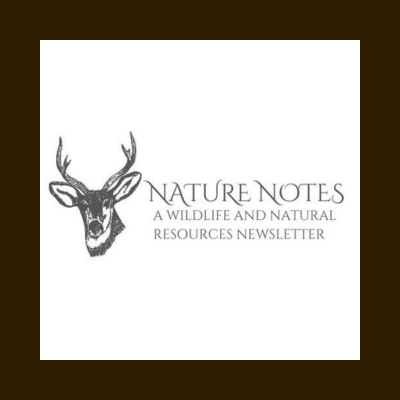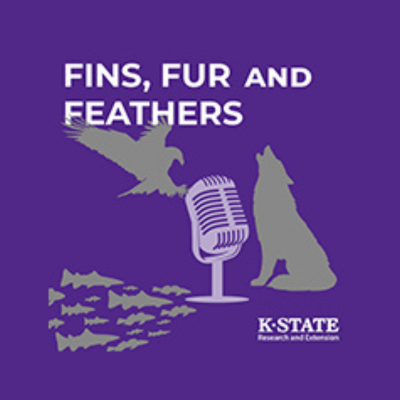Wildlife
Adven Rohling serves at the Wildlife Agent for the Wildcat District. Adaven is very knowledgable in many areas including nuisance damage control, habitat management, and ponds and aquatic weeds. If you need assistance in any of these areas, contact Adaven Rohling at (620) 331-2690 or adaven@ksu.edu .
Connect via Content
Adaven prepares monthly research-based educational columns, publishes audio clips, and has an online mailing list to help you learn information and discover resources. The K-State Extension Wildlife Management Department Specialists, Drew Ricketts and Joe Gerken, also release timely information via Podcast and Youtube. To utilize any of the Wildlife Resources, click the desired box below.
Pond Management
Good pond management begins with proper stocking of your pond. For many ponds in Kansas, a good all purpose fishery can be established by stocking with 100 largemouth bass, 500 bluegills and 100 channel catfish fingerlings per surface acre. Fish can be purchased from members of the Kansas Aquaculture Association. Search for fish dealers nearest your location.
- Channel Catfish Produced in Kansas Ponds for Profit and Pleasure
- Pond Culture of Channel Catfish in the North Central Region
Too few fish
It is very difficult to add small fish to a pond that already has an existing population of fish and make it a success. Often we simply have too many predators to allow the population to grow.
Fish wrong size
Sometimes fishermen complain of catching too many small 3-4 inch size bluegill. When this occurs you may need to increase harvest of bluegill by fishing or seining or fishing and reduce harvest of any predator fish (bass). If you are catching too many small bass and not enough large bass, you may not have enough forage fish or are harvesting too many bass at a young age before they grow large.
Aquatic Weeds
Plant identification is vital before an aquatic weed management strategy can be developed. If you cannot identify the plant to species, at least select a major grouping based on plant characteristics. View the complete K-State Research and Extension publication on Aquatic Plants and Their Control for more information. When the plant has been identified, chemical control options are possible. A great source of information on aquatic plants and how to identify and manage them is Aquaplant from Texas A&M University.
Online Resources
- Aquatic Plants and Control
- Wildlife Species
- Wildlife Habitats
- Nuisance Wildlife Damage Control Management
- Blue Green Algae in Ponds
- Water Testing
- Deer Habitat Managent Guide
- Wildlife Damage Control Permit
- Tadpoles to Frogs
- Crawford County Birds
- Labette County Birds
- Wilson County Birds
- Montgomery County Birds

